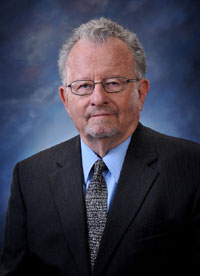
Simply put, about 40 million ethnic Kurds are in the same contiguous neighborhood (about the size of France), but divided into four nations as noted above. Speaking in millions, Turkey has almost 23, Iraq approaches 5. Syria holds the least with about 3, while Iran’s Kurds number between 8 and 9. Small numbers of Kurds live in Armenia, Georgia, and Azerbaijan. The September elections were only in Iraq -- over 92% voted for Kurdish independence from Iraq.
In an area of our world where the West has few friends , some enemies, but many “frenemies,” who will be the supporters of a new “Kurdistan” of nearly 5 million? Most opposition would come from Iraq, which would lose their highest oil-producing area. Turkey has long had problems with their Kurdish minority’s desire to have their own language and culture. A contiguous “Kurdistan” on its southeastern border would increase the aspirations of Kurds now in Turkey. Syria opposes any Syrian Kurdish independence for reasons similar to Turkey’s.
Along with culture, language, and ethnicity, religion always plays a role; but that role has increased in recent years. Most Kurds are Sunni: in an Iran that is 95% Shia; in Iraq that had been dominated by Sunnis until the elections under US occupation when the Shia majority won; and in a Syria that is majority Sunni, but ruled by the Alawis, who are a branch of the Shia. Even with Turkey being mostly Sunni, a common Sunni allegiance does not lessen the historic tensions between Turk and Kurd. Kurds make up about 30% of Turkey’s population, and Sunni Islam can be seen as a unifier where ethnicity, language and culture are competing.
Ecology is the historic determiner of the geography of Kurds who have sought mountainous areas for defensive survival. A Kurdish proverb summarizes this truth: “Kurds have no friend but the mountains!” In David Phillips recent (2015) book, The Kurdish Spring: a New Map of the Middle East, he optimistically states that despite the divisions of history, “the Kurds are evolving from a victimized people to a coherent political community with viable national aspirations.”
Certainly an independent Kurdistan carved out of northern Iraq must have some friends! After the USA’s commitment to a new Iraq whose democratic elections strengthened their Shias, can the USA oppose the Kurds whose superb soldiers were key to defeating ISIS? And then there is Russia which can’t be positive about a “Kurdistan” when the Kremlin’s allies, Turkey, Syria, and Iran are against it. While the list of “frenemies” seems long, one nation in the area is clear about its support of a new “Kurdistan,” especially if it is the beginning of a larger merger from Kurdish neighbors in Turkey, Iran, and Syria.
The present political mosaic of nations in the area have been opposed to Israel. Thus, a new Kurdistan is reason enough for Israel to befriend it, but there are also very compelling historical reasons. During the 8th century, BCE, after the Assyrian conquests, tradition states that the patri-clan of Benjamin was relocated to the area of today’s Irbil in northern Iraq. By the 12th century ACE, an established Jewish community lived in Mosul—the business and religious center of Kurds. Some Jewish families fled the European crusaders in Palestine by resettling among Kurds. Under the Ottomans, the Jewish communities in Kurdish areas had rabbis. A famous woman Talmudic scholar and teacher, Asenath Barzani, was the daughter of Kurdish Rabbi Samuel Barzani. By the late 1500s, Kurdish Jews began to return to Galilee; but the majority of Kurdish Jews went to Israel after its creation in 1948. Some 200,000 Kurdish Jews are in Israel today. Kurdish Jews remaining in northern Iraq number less than 900. Recently appointed to represent Jews in the new Iraq in the Ministry of Religious Affairs was Sherzad Omar Mamsani.
If today’s developing series of alliances in the Middle East depend more on religion than on ethnicity and on outside allies, the Sunni will be led by Saudi Arabia, Turkey, and some Gulf States. The Shia leader will be Iran with the predominately Shia Iraq, the Alawis of Syria, the Hezbollah of Lebanon and perhaps the Houthi of Yemen. The easy decision for Israel is to befriend an emerging Sunni Kurdistan. More difficult will be Israel ending up in the same camp as Saudi Arabia. Most difficult is an issue raised by Israel’s Haaretz news/opinion (September 25, 2017): “After all, if historical justice legitimates Kurdish and Jewish self-determination, it’s just as applicable to the Palestinians.”
Postscript: Ten days after the September 25 Kurdish referendum (93% voted for independence), Jalal Talabani died at 83. He was the first Kurdish president of Iraq (2005-2015).